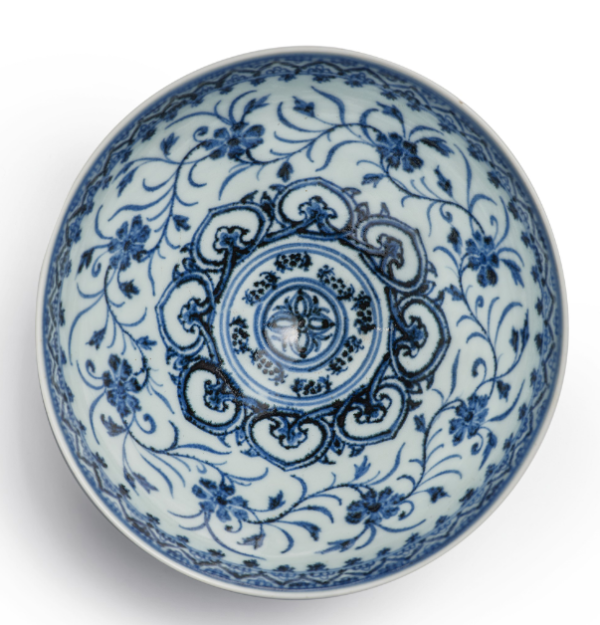Rare Chinese bowl bought for $35 could fetch up to $500,000 at auction
CGTN | Updated: 2021-03-04 15:58

Talk about a great bargain!
A small bowl bought for $35 in a yard sale in the US turned out to be a rare Chinese ceramic from the Ming Dynasty (1384-1644) worth up to half a million dollars.
The blue and white porcelain piece has steep rounded sides that narrow at the bottom, making it look like a lotus bud (lianzi) or chicken heart (jixin) – quintessential designs from the Ming era. It features floral motifs in rich cobalt blue of lotuses, peonies, chrysanthemums and pomegranate blossoms.
Experts at Sotheby's called the bowl "rare and exceptional" and said it bears all the hallmarks of imperial porcelain items made during the reign of Zhu Di or the Yongle Emperor (1403–1424), the third ruler of the Ming Dynasty.
"The style of painting, the shape of the bowl, even just the color of the blue is quite characteristic of that early, early 15th century period of porcelain," Angela McAteer, Sotheby's senior vice president and head of its Chinese Works of Art Department, told the Associated Press.
The smooth body and silky glaze were also dead giveaways of the piece's provenance.
"In every respect, this delicate bowl is a quintessential Yongle product, made for the court, showing the striking combination of superb material and painting," read a writeup on the auction house's website.
The bowl was bought by an unidentified man at a yard sale last year in New Haven in the northeastern US state of Connecticut, who later sought appraisal from specialists about his find. He sent a picture to Sotheby's and McAteer and Chinese ceramic expert Hang Yin had a good feeling about it.
"It was immediately apparent to both of us that we were looking at something really very, very special," said McAteer. Further in-person examination confirmed their inkling, although the experts admit how the bowl ended up in a junk sale or made its way from China to the US remains a mystery.

The exquisite workmanship of the bowl was the result of imperial patronage during the reign of the Yongle Emperor whose emphasis on the artistic dimension of porcelain items "lifted them to completely new levels," according to Sotheby's catalog notes, and made them much more than utilitarian wares.
The craft got an impressive overhaul after the court began to place large orders, recruited design specialists and dispatched eunuchs to the kilns in what is known today as Jingdezhen, the "ceramic capital" in east China's Jiangxi Province, to supervise operations.
The auctioneers say the artifact is one of only seven such bowls known so far in the world, with the others mostly in museums. Two are in the Palace Museum in Taiwan, another two at museums in London and one in the National Museum of Iran in Tehran. The sixth bowl was last seen on the market in 2007 when it went under the hammer at Christie's, fetching HK$840,000 (or over $107,000 at the exchange rate at the time).
The seventh bowl will be part of Sotheby's "Important Chinese Art" auction in New York on March 17.
The item is in "very good condition," except a tiny shallow chip and minor warping on the rim, auctioneers have said, valuing it between $300,000 and $500,000.
























